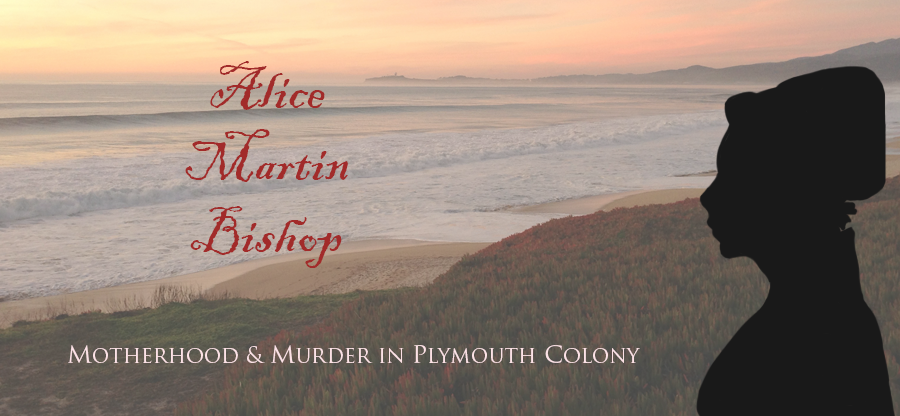Kristin Luce, August 2014
Beyond the questions of Alice Martin Bishop’s (AMB) parentage and origins (and that of her husbands), one question that haunts AMB researchers is what happened to Abigail Clarke — Alice’s oldest daughter — after her mother’s execution. Through all of our research, we haven’t found anyone who has been able to place Abigail after 1649, when the PCR notes that John Churchill was appointed to sell her father George Clarke’s house for her “use and good” (vol. 2).
This order, in fact, is the only reason we even know there was an Abigail. The only mother-child relationship for Alice that we have direct evidence for is that of Alice and Martha, which is specified in the PCR’s account of Martha’s murder and Alice’s conviction. As we’ve discussed before, no mention is made of Abigail or Damaris (Alice’s youngest daughter) by Rachel Ramsden during her two visits to the house that day, or by the coroners, who arrived later.
But Abigail is mentioned in the PCR the following year, in May 1649, as the daughter of George Clarke. John Churchill, of Plymouth, is ordered to dispose of “the house and land [that heretofore] was George Clarke’s for the use and good of Abigaell Clarke, daughter unto the said Gorg Clarke.” If we assume this is our George Clarke — and we haven’t yet found any other George Clarkes in Plymouth at that time — then we can confidently assume that this Abigail, who several months after Alice’s execution needs someone to provide for her, was a daughter from his marriage to Alice.
Someone, at some point, guessed Abigail’s birth date to be about 1641/1642, and that is the date used in all accounts of Abigail and AMB that we’ve found so far. It’s an interesting calculation, as it comes two years after George and Alice were married, a length of time longer than the average wait for a first child, but maybe there was an infant who died before Abigail was born.
